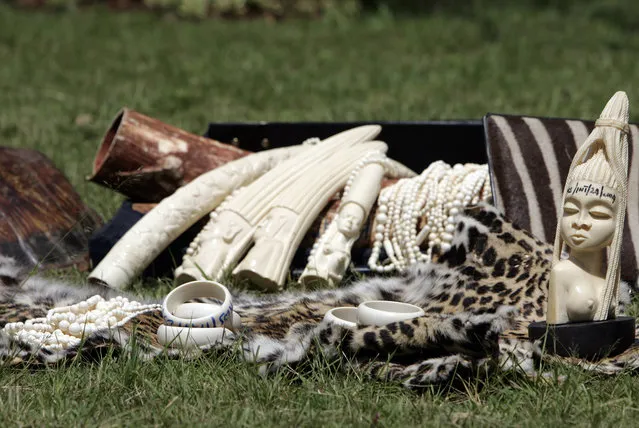
Pieces of ivory and animal skins are displayed during a news conference at the Kenya Wildlife Services headquarters in Nairobi, Kenya, November 17, 2008. (Photo by Antony Njuguna/Reuters)
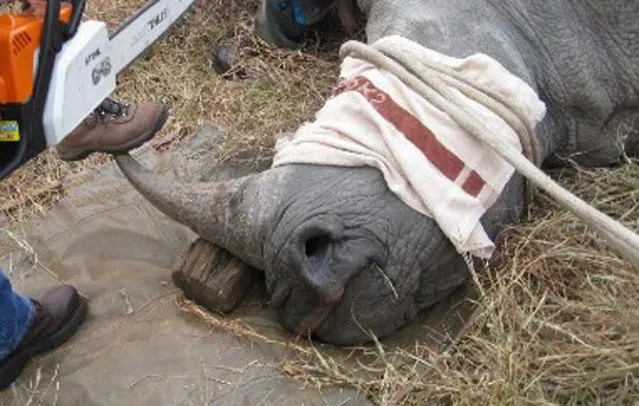
An undated evidence photograph released by the U.S. Department of Justice (DOJ) allegedly shows a rhino horn being sawn off with a chain saw in Cameroon. The DOJ said the pictures were sent by email to defendant Zhifei Li on or about December 22, 2010, offering fresh rhino horns for sale. Li, the owner of an antique business in China, was sentenced to serve 70 months in prison for heading an illegal wildlife smuggling conspiracy. (Photo by Reuters/U.S. Department of Justice)
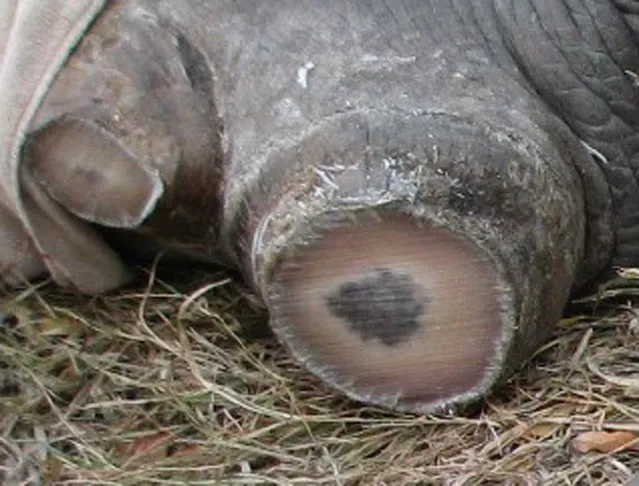
An undated evidence photograph released by the U.S. Department of Justice (DOJ) allegedly shows a rhino after its horns were sawn off with a chain saw in Cameroon. (Photo by Reuters/U.S. Department of Justice)
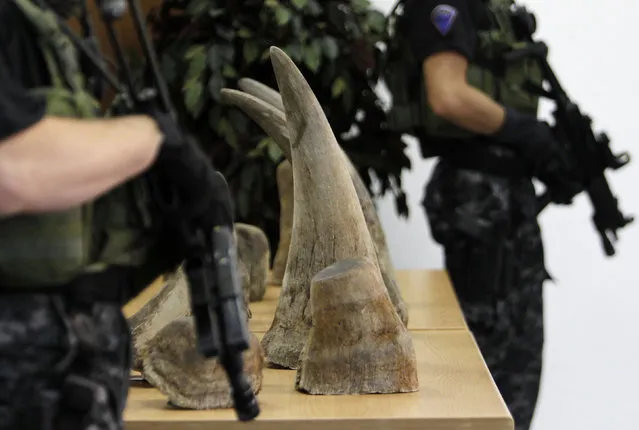
Police officers stand guard next to a part of a shipment of 24 rhino horns seized by the Customs Administration of the Czech Republic during a news conference in Prague July 23, 2013. (Photo by David W. Cerny/Reuters)
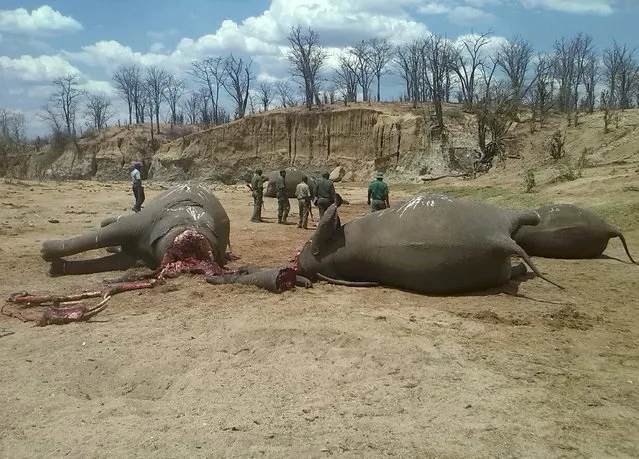
A group of elephants, believed to have been killed by poachers, lie dead at a watering hole in Zimbabwe's Hwange National Park October 26, 2015. (Photo by Reuters/Stringer)
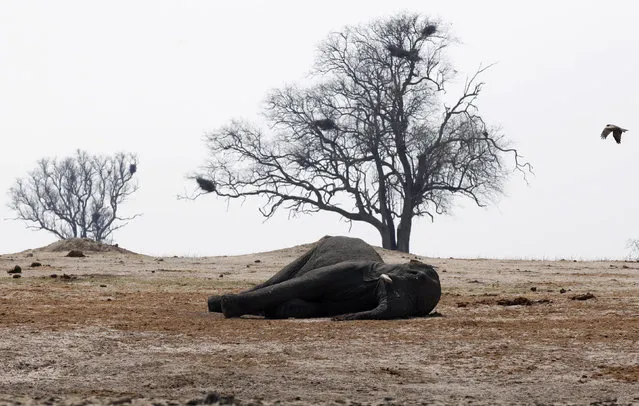
A bird flies near the carcass of an elephant, which was killed after drinking from a poisoned water hole, in Zimbabwe's Hwange National Park, about 840 km (522 miles) east of Harare, September 27, 2013. Zimbabwean ivory poachers have killed more than 80 elephants by poisoning water holes with cyanide, endangering one of the world's biggest herd. (Photo by Philimon Bulawayo/Reuters)
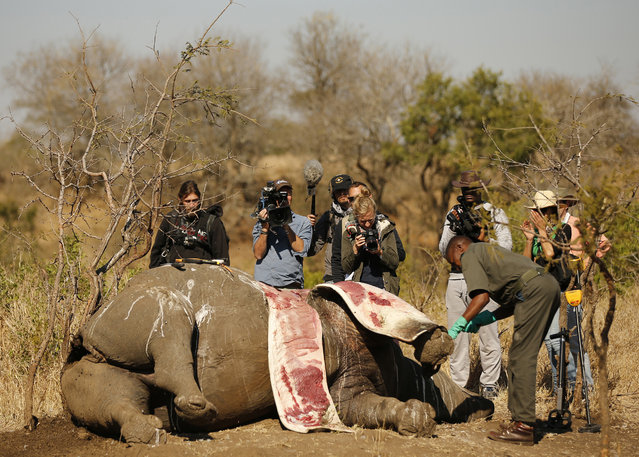
Members of the media film as a ranger performs a post mortem on the carcass of a rhino after it was killed for its horn by poachers at the Kruger national park in Mpumalanga province August 27, 2014. Rhino poachers in South Africa now risk giving themselves away when they shoot thanks to a high-tech, gunfire-detection system being piloted in the country's flagship Kruger National Park. The stakes are high, for rhinos are being slain in escalating numbers for their prized horns, alarming both conservationists and the government since wildlife in South Africa is an important tourist draw. (Photo by Siphiwe Sibeko/Reuters)
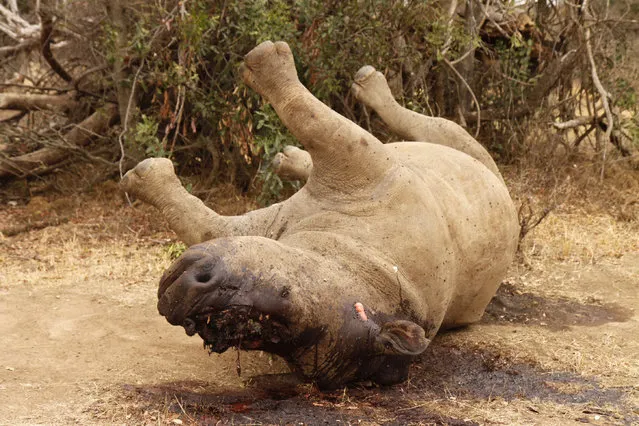
The carcass of a rhino is seen after it was killed for its horn by poachers at the Kruger national park in Mpumalanga province, South Africa, September 14, 2011. (Photo by Ilya Kachaev/Reuters)
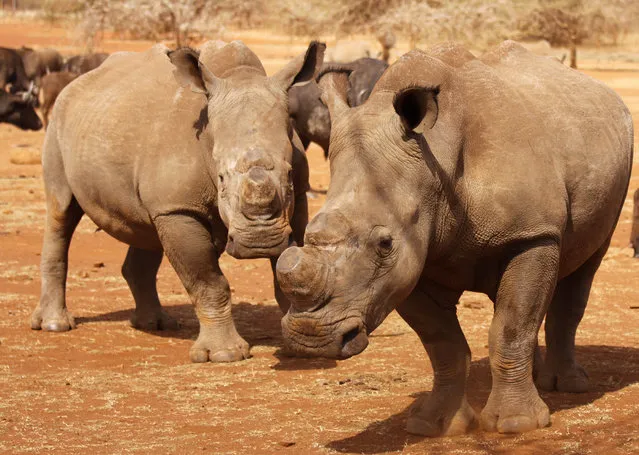
Dehorned rhinos are seen at the Kruger national park in Mpumalanga province September 16, 2011. The rhinos were dehorned by a veterinary surgeon to prevent poaching. (Photo by Ilya Kachaev/Reuters)
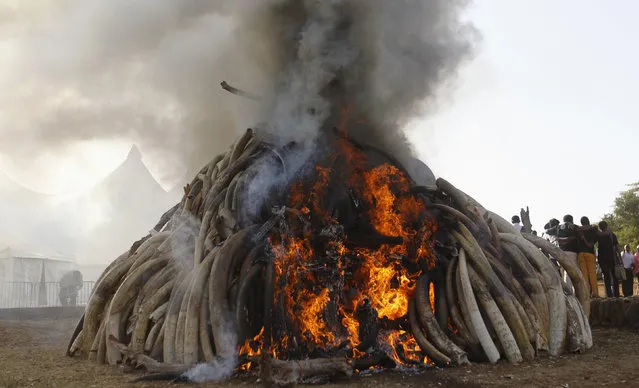
Fifteen tonnes of ivory confiscated from smugglers and poachers is burnt to mark World Wildlife Day at the Nairobi National Park March 3, 2015. (Photo by Thomas Mukoya/Reuters)
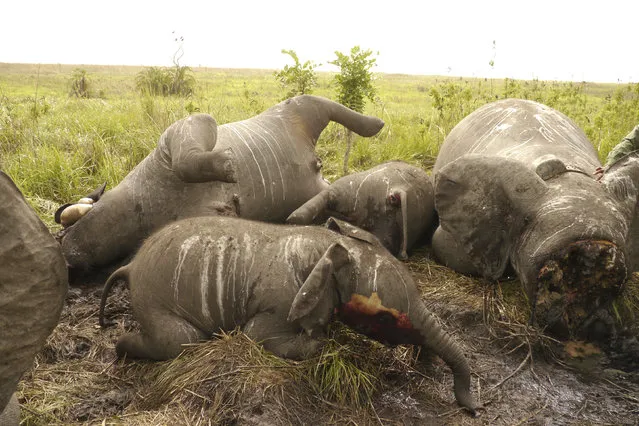
The carcasses of some of the 22 elephants slaughtered in a helicopter-bourne attack lie on the ground in the Democratic Republic of Congo's Garamba National Park, in this undated handout picture released by the DRC Military. (Photo by Reuters/DRC Military)
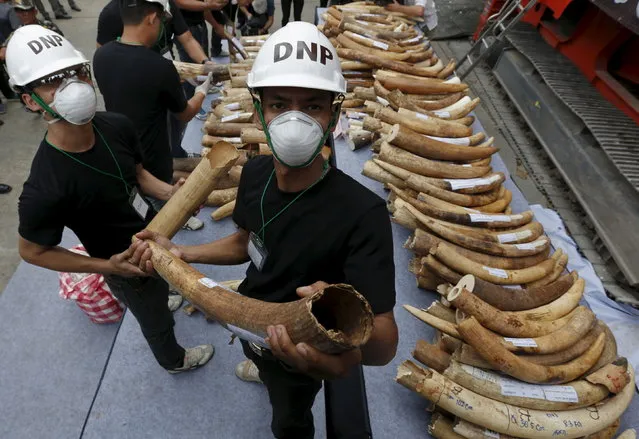
Officials hold confiscated elephant tusks before destroying the ivory at the Department of National Parks, Wildlife and Plant Conservation, in Bangkok, Thailand, August 26, 2015. (Photo by Chaiwat Subprasom/Reuters)
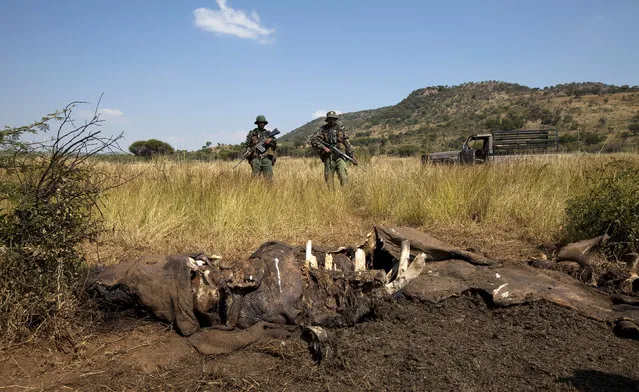
Members of the Pilanesberg National Park Anti-Poaching Unit (APU) stand guard as conservationists and police investigate the scene of a rhino poaching incident April 19, 2012. (Photo by Mike Hutchings/Reuters)
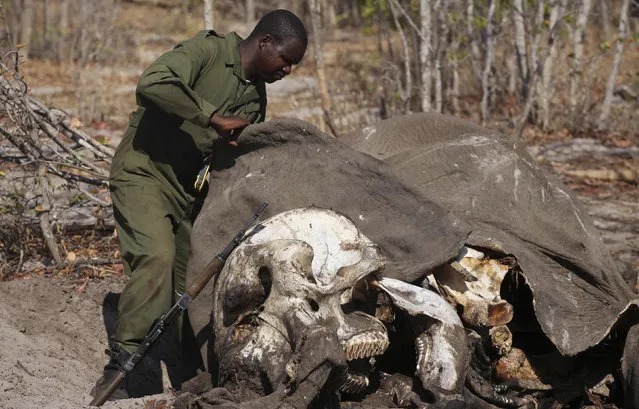
An armed ranger examines a decomposing elephant carcass inside Hwange National Park, about 840 km (521 miles) outside Harare, October 28, 2013. (Photo by Philimon Bulawayo/Reuters)
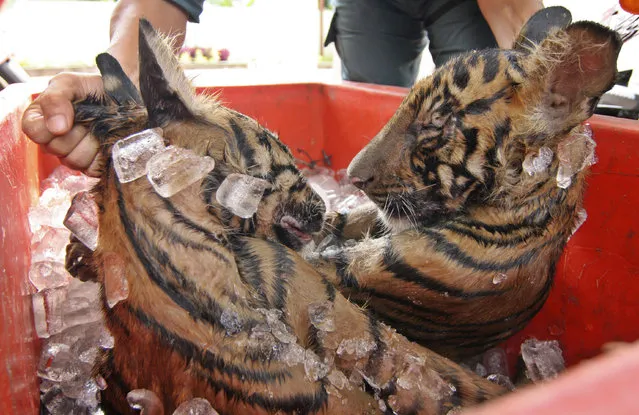
A forest police shows two eviscerated body of Sumatran tigers found in a cool box after it was confiscated from villagers at the Deli Serdang district in Indonesia's North Sumatra province June 3, 2008. The eviscerated body of the Sumatran tigers were being prepared to be sold to another province, an official said. (Photo by Y. T. Haryono/Reuters)
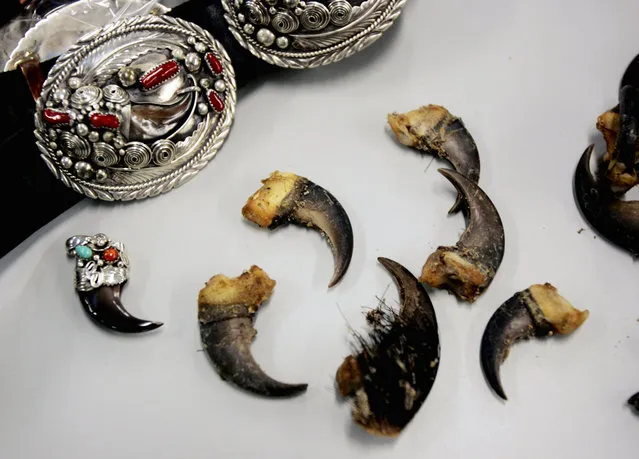
Freshly harvested black bear claws and some jewelry made from them are recent arrivals at the U.S. Fish and Wildlife Service Wildlife Property Repository in Commerce City, Colorado March 22, 2007. The Repository holds thousands of illegal wildlife trade artifacts confiscated at ports of entry to the United States. (Photo by Rick Wilking/Reuters)

Around three tonnes of illegal ivory seized by French customs agents are displayed before being pulverized into dust in Paris February 6, 2014 as part of an Europe's first destruction of a stockpile of the banned elephant tusks. The destruction of the ivory, confiscated over two decades, is intended to send a message to poachers and traffickers and in accordance to the action to the French government to fight poaching of endangered species. (Photo by Charles Platiau/Reuters)
07 Nov 2015 08:03:00,
post received
0 comments
